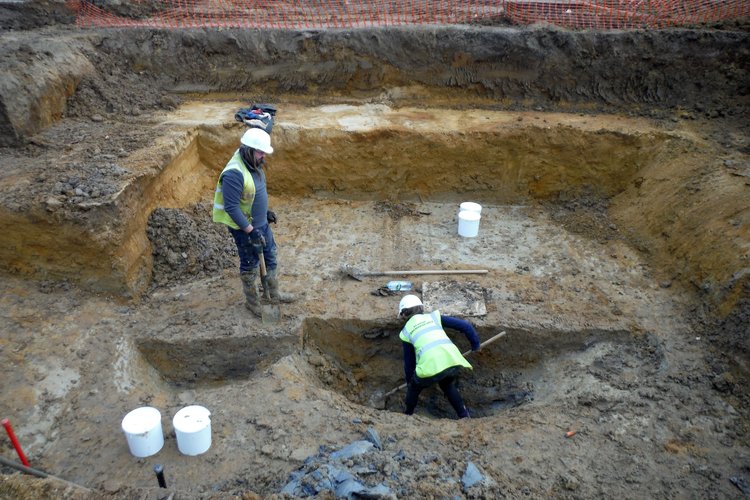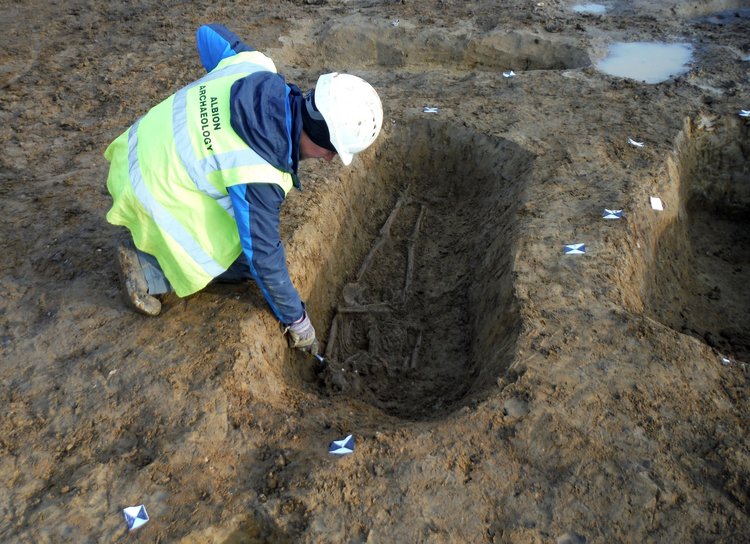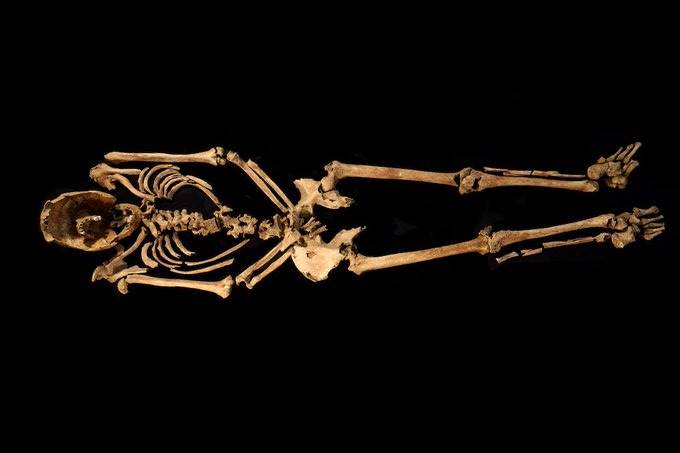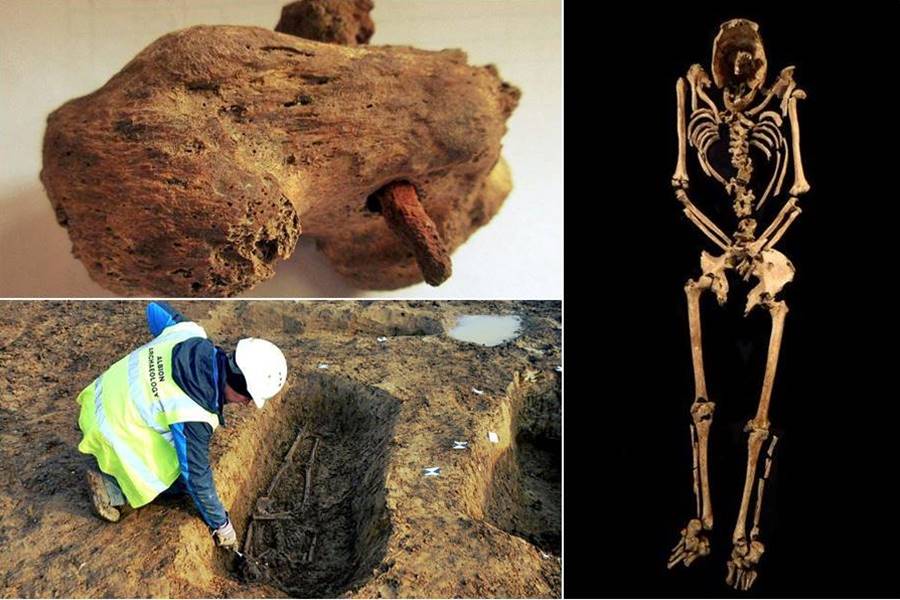Wed 15 December 2021:
In Cambridgeshire, a nearly 1,900-year-old skeleton was discovered at the site of a future housing development. It didn’t seem significant at first. However, a grisly discovery was made when the remains were sent to a lab in Bedford: a nail through the heel bone. According to experts, this is one of the most important pieces of physical evidence of the crucifixion in ancient Rome.

The man, who was in his mid-thirties at the time of his death, was buried in one of five ancient cemeteries surrounding the newly discovered Roman settlement at Fenstanton, near Cambridge, with his arms crossed in a grave with a wooden structure, possibly a bier.
The Fenstanton man lived between AD130 and AD360, putting his bones between 1,661 and 1,891 years old, according to radiocarbon dating.

Nails used for crucifixion – the method of capital punishment in which the victim is tied or nailed to a large wooden beam and left to hang until death – are uncommon, most likely because the victims would not have received proper burial and, contrary to popular belief, crucifixion was frequently carried out using a rope.
Nails used in crucifixion, a form of capital punishment in which victims are nailed or tied to a wooden beam and hung from it until they die, are extremely rare. This is most likely due to the fact that the victims were rarely properly buried and, contrary to popular belief, were usually hung by a rope.
Crucifixion emerged as the most likely explanation after a lengthy investigation. The first details of this incredible discovery were published in British Archaeology magazine on Wednesday.

This was the first time a nail had been discovered in an archaeologically exhumed skeleton, according to Albion Archaeology director David Ingham. He explained that it’s not the sort of thing you’re looking for.
He explained that archaeologists know a lot about crucifixion because of historical records, including how, when, and where it happened. This is, however, the first concrete evidence of how it worked.
It’s also a significant find because reclaiming a crucifixion victim’s body, bringing it back to a settlement, and burying it with others is extremely rare.
The reason for the crucifixion, as well as the cause and identity of the man, will never be known, but it is thought that the Romans reserved the crucifixion for slaves, rebels, and members of the lower classes.
A nail was discovered in the Fenstanton man’s right heel bone, the calcaneum, which was most likely inserted into the side of an upright timber. The crucifixion was most likely carried out somewhere else, perhaps by the side of a road.
This is the first crucifixion-related find in northern Europe, and the fourth worldwide; two of the finds were missing nails.
SOURCE: INDEPENDENT PRESS AND NEWS AGENCIES
_____________________________________________________________________________
FOLLOW INDEPENDENT PRESS:
TWITTER (CLICK HERE)
https://twitter.com/IpIndependent
FACEBOOK (CLICK HERE)
https://web.facebook.com/ipindependent
Think your friends would be interested? Share this story!






